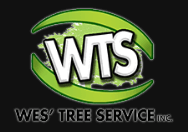It might surprise you how quickly a tree can go from healthy to being unable to be saved. Here at Wes’ Tree Service, we recommend staying diligent with tree inspections so that a problem can be identified while it is still treatable. We have the expertise to properly identify the common tree diseases found in Ontario and take the appropriate measures to save your tree. Call on us at least once a year for an inspection or immediately if you notice any signs of disease. Here are some common tree diseases, what tree species they can affect, and how serious the situation is.

- Emerald Ash Borer – It only takes two to three years for a tree to succumb to the harm this beetle from Asia causes to any species of tree it chooses. It feeds on the inner bark, keeping nutrients and water from traveling through the tree. Early signs include the presence of small holes, reduced tree density, and cracking bark.
- Beech Bark Disease – As the name implies, this disease is specific to beech trees. It is a fungus that invades and kills the bark. While this is a relative newcomer to the area, you should watch for dead bark areas with a brown slime and discolouration in the bark.
- Tent Caterpillars – There are many moth and butterfly species in this category, with the fall webworm being one of the most prolific. There are nearly 90 species of trees that they prefer, and although their webs do not usually kill the tree, they are unsightly and can tend to defoliate the branches.
- Tar Spot – Maple trees are beautiful trees that many people enjoy having in their landscaping, but if you have one with tar spot, the attractiveness is diminished. This disease does not kill the tree, but you should take care to destroy any affected leaves in the fall to avoid a reoccurrence in the spring.
- Magnolia Scale – These large insects destroy tree branches from the inside by feeding on the sap in the tree’s vascular system. If you notice branch decline, stunted growth, or mould covering the branch, it should be treated as soon as possible. This insect prefers certain magnolia trees, tulip trees, and Virginia creeper.
- European Gypsy Moth – This is one of the oldest of tree diseases, as Ontario has been battling it for more than two decades. The larvae stage consumes the leaves, leaving the tree susceptible to a host of other diseases. Death of the tree is possible if not treated. This disease can be found on a wide variety of tree species, including apple, birch, oak, willow, poplar, cherry, elm, maple, and basswood.
- Asian Long-Horned Beetle – This disease is a death sentence for the tree, as the beetle’s larvae tunnel through the tree, weakening it until it dies. This happens in a very short period of time, making it the hardest to combat and has had a devastating effect on forests. If you notice a hole in a tree that is 20mm across or larger, treatment must be undertaken immediately to have any hope of saving the tree. Affected trees include aspen, maple, elm, hackberry, poplar, mountain ash, willow, and birch trees.
